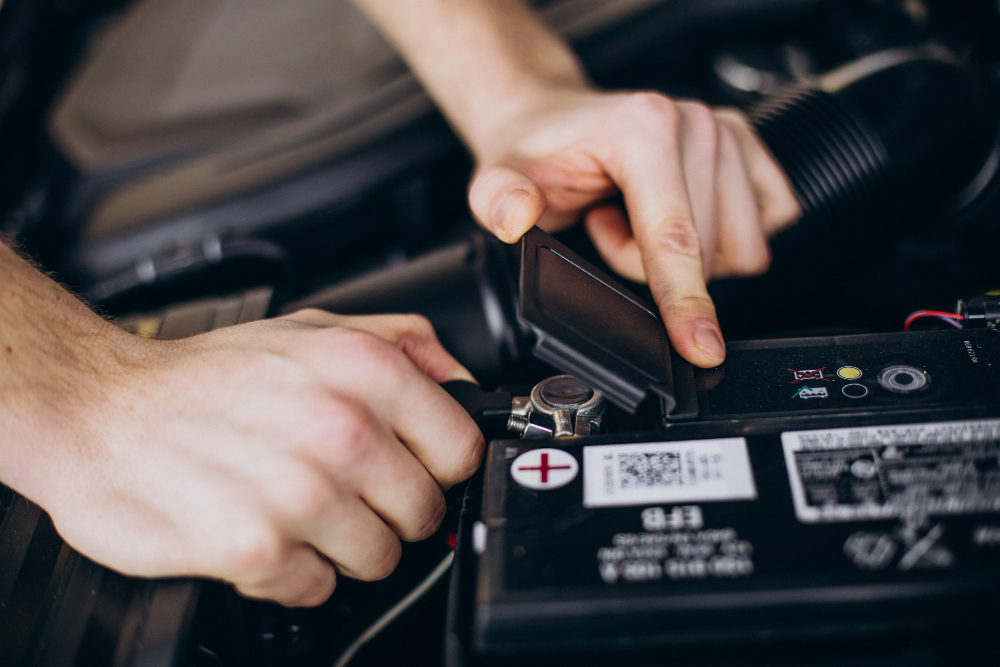In recent years, off-roading has become popular, with more and more people seeking adventure on rough terrain. It offers a unique experience of exploring nature and challenging one’s driving skills. That’s why 98% of SUV drivers go on a road trip once a year. One of the most common SUVs bought for this purpose alone is the Jeep Renegade.
The Jeep Renegade is a compact SUV that has quickly gained popularity among off-roading enthusiasts. It balances ruggedness and comfort perfectly, making it an ideal vehicle for daily commutes and weekend adventures.
One of the main reasons the Jeep Renegade is a popular choice for off-roading is its impressive capabilities. Its high ground clearance, all-wheel drive, and various terrain modes make it suitable for all types of roads, from muddy trails to steep inclines. It also has excellent traction control, allowing drivers to navigate challenging terrains easily. However, taking care of a Jeep Renegade can also be difficult, especially regarding its battery.
I. What You Need to Know About Car Batteries
Like any other vehicle, the Jeep Renegade’s performance is significantly influenced by the state of its battery. The battery acts as the car’s lifeblood, powering all the electrical components and, most importantly, starting the engine. If the battery performance is compromised, it can lead to various issues that may hamper the vehicle’s overall performance.
A weak battery can result in insufficient power supply to the ignition system, compromising the engine’s performance and potentially preventing the car from starting. Moreover, it can also affect the operation of the car’s electrical components, such as the headlights, radio, air conditioning, and even the navigation system. Therefore, maintaining a healthy battery is crucial to ensure the optimal performance of your Jeep Renegade, especially during off-roading adventures where reliability is paramount. But what’s in a battery that makes it so crucial for cars?
A. Components of a Car Battery
A car or an automotive battery is a rechargeable battery that provides electric energy to a motor vehicle. It primarily comprises six cells, each producing 2.1 volts, resulting in a total voltage of 12.6 volts when fully charged. The main components of a car battery include:
- Battery Case: Made from hard plastic, it houses the cells and other components and protects them from external damage.
- Battery Cells: Each cell consists of a positive and a negative plate. These plates are submerged in an electrolyte solution comprising sulfuric acid and distilled water, generating a chemical reaction that produces electricity.
- Terminals: These are points of connection where the battery is linked to the vehicle’s electrical system. Batteries typically have two terminals – one positive (marked by a ‘+’) and one negative (marked by a ‘-‘).
- Separators: These keep the positive and negative plates apart to prevent a short circuit.
- Electrolyte Solution: The electrolyte solution enables the chemical reaction to generate an electric charge. It’s a mixture of sulfuric acid and distilled water.
Proper functioning and maintenance of these components are vital for the overall performance and longevity of the battery and, in turn, the vehicle.
B. Reliability And Car Performance
Reliability is integral to the performance of any vehicle, especially when off-roading and exploring challenging terrains. One key determinant of this reliability is the condition of the battery. A well-maintained battery ensures consistent and optimal performance of all electrical components in the vehicle, from the engine ignition system to the headlights, air conditioning, and radio.
When the battery is in good condition, the vehicle can deliver its full potential, traversing difficult trails and inclines without hindrance. In contrast, a faulty or weak battery can compromise the vehicle’s performance, limiting its off-road capabilities. Thus, regular battery checks and proper maintenance are crucial for enhancing the reliability and overall performance of your Jeep Renegade.
II. Jeep Renegade Battery
It’s important to note that every car battery isn’t the same. Most brands use a particular kind of battery for each make and model of vehicle. That’s why knowing the specific battery that runs on your Jeep Renegade is essential if you want it to last longer. Here’s what you need to know.
A. Understanding the Jeep Renegade Battery
The Jeep Renegade typically uses a 12-volt AGM (Absorbent Glass Mat) battery. These batteries are renowned for their superior performance and durability, making them particularly suitable for vehicles like the Renegade that often operate in challenging conditions. AGM batteries are designed with high vibration resistance and improved cycle life, making them excellent for start-stop systems and powering onboard electronics.
The Jeep Renegade battery is located under the hood and easily accessible for regular checks and necessary maintenance. It’s crucial to understand that while these batteries are designed for longevity, their life span and performance can be greatly influenced by driving habits, weather conditions, and proper maintenance. If you want to find the battery specification for your Jeep Renegade, you’ll need to remove the old battery, which should be written on the label.
B. Signs of Poor Battery Performance
Awareness of poor battery performance can help you prevent potential issues, ensuring a smooth and reliable drive. Here are some key symptoms to watch out for:
- Slow Engine Start: When you turn the ignition key, the solenoid receives a signal from the battery to engage the starter motor. If the engine starts slowly or hesitates, it could indicate a weak battery.
- Dimming Headlights: Battery strength correlates with headlight brightness. Dim or flickering headlights could suggest a low battery.
- Weak Electrical Functions: If other electrical components like power windows, windshield wipers, air conditioning, or radio are not operating at full power, it might be due to a weak battery.
- Warning Lights: If there is an issue with the battery, the Battery Management System (BMS) warning light on your dashboard might illuminate. It’s essential to address this warning immediately to prevent further problems.
- Swollen Battery Case: If the battery case appears swollen, it could indicate that the battery has been exposed to excessive amounts of heat, reducing its lifespan and performance.
- Aged Battery: Car batteries typically need to be replaced every 3-5 years. If your battery is older than this, it may be nearing the end of its lifespan.
- Corroded Connectors: Noticeable corrosion on the terminals can disrupt the electrical flow and reduce your battery’s performance.
Remember, regular check-ups and battery maintenance can help you detect these signs early and take necessary action to prevent more severe issues.
C. Battery Maintenance Tips
Maintaining your Jeep Renegade’s battery is essential to ensure peak performance and longevity. Here are some practical tips:
- Regular Inspection: Keep a close eye on your battery before long trips or off-road adventures. Look out for any physical damage signs of corrosion on the terminals, and ensure the battery is securely mounted.
- Clean Terminals: The battery terminals can become eroded over time, affecting the electrical flow. Clean them regularly using a mixture of baking soda and water and a wire brush.
- Check Fluid Levels: Ensure the fluid levels are appropriate for non-sealed batteries. If low, refill with distilled water.
- Secure Connections: Loose battery connections can lead to electrical issues. Ensure that the connections are secure and tightened properly.
- Keep it Charged: A fully charged battery is less likely to freeze in cold temperatures. If you don’t use your vehicle regularly, consider using a battery maintainer to keep it fully charged.
- Professional Battery Check: Regular professional checks can help detect issues early. A mechanic can conduct a load test to assess the battery’s health and replace it if necessary.
Remember, a well-maintained battery ensures a smoother drive and saves you from unexpected costs and inconveniences.
D. Testing Battery Health
Testing the health and overall condition of your Jeep Renegade’s battery is integral to its maintenance. This can be done at home using a multimeter or a professional garage. Follow the steps below to test the health of your Jeep Renegade’s battery:
- Gather the Required Tools: You will need a digital multimeter for this process, which can be easily found at any auto store or online. Make sure the multimeter is set to 20 DC volts.
- Pop the Hood: The battery in a Jeep Renegade is located near the engine.
- Identify Battery Terminals: Look at the battery; you’ll see two terminals. One is marked with a ‘+’ sign (positive terminal), and the other has a ‘-‘ sign (negative terminal).
- Connect the Multimeter: Connect the red lead from your multimeter to the positive terminal of your battery and the black information to the negative terminal.
- Read the Voltage: With the multimeter correctly connected, read the voltage output on the multimeter’s screen. A healthy, fully-charged battery should register around 12.6 volts.
- Check Voltage Under Load: Have someone start the vehicle while you monitor the multimeter. The voltage reading should drop but not fall below 10 volts. If it does, the battery might not be in good condition.
- Interpret the Results: Your battery is undercharged if the voltage reading is below 12.4 volts. A reading between 12.4 and 12.6 volts means your battery is healthy, while a reading above 12.6 volts indicates an overcharged battery.
- Seek Professional Help: If your battery is undercharged or overcharged, consider taking your vehicle to a professional mechanic for a detailed battery check and necessary repairs or replacement.
Always exercise caution when handling car batteries. If you’re unsure, seek help from a professional.
E. Charging the Battery
The battery of a Jeep Renegade needs to be charged periodically. Charging a battery is a simple process that can be done at home. First, you’ll need a battery charger to ensure compatibility with your Jeep Renegade battery. Here’s how you can charge your vehicle’s battery:
- Prepare the Battery: Ensure that all electrical components are turned off before charging the battery.
- Connect the Charger: Connect the charger’s red clamp to the battery’s positive terminal and the black clamp to the negative terminal.
- Plug in the Charger: Plug into a power outlet and turn it on.
- Monitor Charging Time: The charging time will depend on factors like battery size, voltage output, temperature, etc. A typical 12-volt car battery should take around 8-12 hours to charge fully.
- Disconnect the Charger: Turn it off and disconnect it from the battery.
- Perform a Load Test: After charging, perform a load test to ensure the battery is in good condition before using it again.
Regularly charging your Jeep Renegade battery can help maintain its health and extend its lifespan. Remember always to follow the instructions provided by the manufacturer for your specific battery model.
F. Jump Starting Procedure
If your Jeep Renegade fails to start, you may need to jump-start the battery. This process is especially handy if you’re on an off-road trip and far from professional help. Here’s a step-by-step guide on how to do it safely:
- Prepare the Vehicles: Park the working vehicle close to the one with the dead battery, but ensure they do not touch.
- Turn Off Both Vehicles: Make sure both vehicles are turned off, with keys removed from ignitions.
- Identify the Batteries and Terminals: Open the hood of both vehicles and locate the batteries. Identify the positive (‘+’) and negative (‘-‘) terminals.
- Attach Jumper Cables: Jumper cables are color-coded; red represents positive, and black represents negative. Attach one of the red clamps to the dead battery’s positive terminal and the other end to the good battery’s positive terminal. Then, attach the black clamp to the good battery’s negative terminal and connect it to a clean metal surface on the dead vehicle’s engine block or frame.
- Start the Working Vehicle: Turn on the engine and let it run for a few minutes. This allows the dead battery to draw charge from the functional one.
- Remove the Cables: Once the dead vehicle is running, remove the jumper cables in reverse order of how they were connected. Start with the black cable attached to the ground and end with the red cable attached to the previously dead battery.
It’s important to keep the jumper cables separate when connecting or disconnecting and never let them touch when the vehicle runs. If you’re unsure about the procedure and far from professional help, it’s best to wait for assistance or seek guidance from someone with experience.
The battery is a critical component of your Jeep Renegade, ensuring optimal performance and the functionality of various electrical systems. Understanding the type of battery your vehicle uses, recognizing signs of poor battery performance, and performing regular maintenance is crucial to enhancing your off-road experience and preventing unwanted surprises. With regular inspections, you can ensure your battery’s longevity and reliability. Should the need arise, knowing how to jump-start your battery safely can be a lifesaver.





